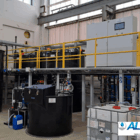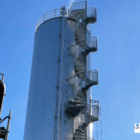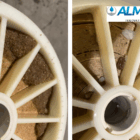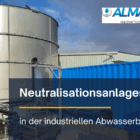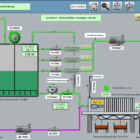The pH value is a fundamental parameter in industrial water and wastewater treatment. It defines the acidity or alkalinity of a solution and has a significant influence on chemical, physical and biological processes in water treatment and wastewater treatment plants. A sound understanding of the pH value is crucial for the optimization of processes such as precipitation, flocculation, neutralization, biodegradation and corrosion protection.
Table of contents
Definition and chemical principles
The pH value describes the concentration of hydrogen ions (H⁺) in a solution and is defined by the following logarithmic equation:
pH = -log10[H+]
- Neutral range: pH = 7 (e.g. pure water).
- Saurer Bereich: pH < 7 (z. B. Abwasser mit Schwefelsäure).
- Alkaline range: pH > 7 (e.g. cooling water with alkaline additives).
The logarithmic scale means that a change of one unit corresponds to a tenfold increase in the H⁺ concentration.
Significance of the pH value in chemical reactions:
- H⁺ ions dominate in the acidic range.
- Hydroxide ions (OH-) dominate in the alkaline range.
The pH value has a significant influence on solubility, reaction speed and the equilibrium states of chemical reactions.
Importance of the pH value in water treatment
Corrosion protection:
- Extremely low or high pH values promote the corrosion of pipes and system components.
- Optimum pH ranges (e.g. 8-8.5 for cooling water) minimize corrosion and ensure operational safety.
Precipitation and flocculation:
- The pH value controls the precipitation of poorly soluble salts, such as calcium carbonate or iron hydroxide.
- The optimum range for the precipitation of metals is often in the alkaline range (pH 8-11).
- Microorganisms in biological treatment stages (e.g. activated sludge process) require a stable pH range (6.5-8.5) for optimum growth and metabolic activity.
- The efficiency of precipitants, such as iron or aluminum salts, depends heavily on the pH value.
- Acids and alkalis are dosed to adjust the pH value to optimum ranges.
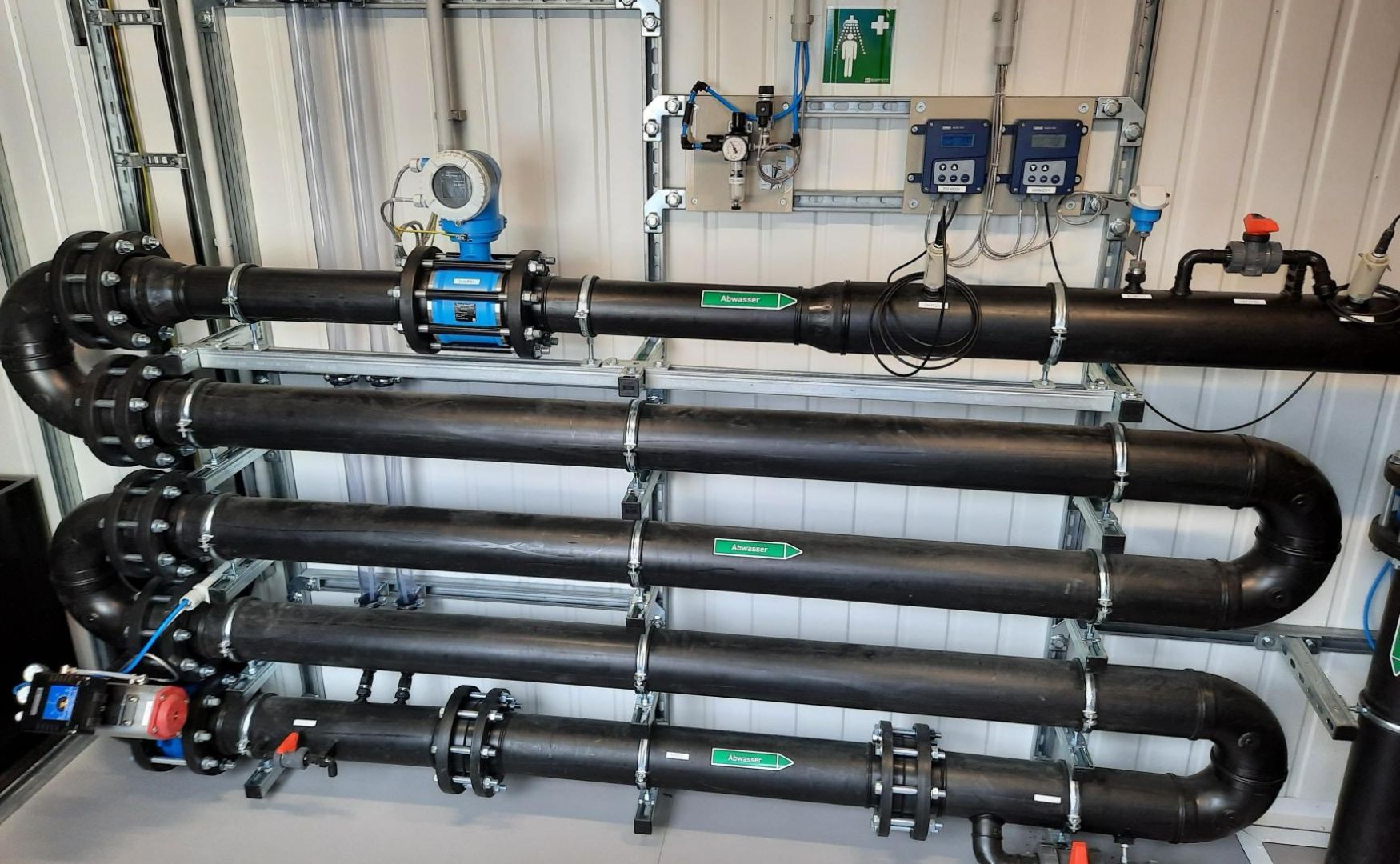
Photo: Reaction section of a pH-controlled neutralization system with automatic dosing of acid and alkali(ALMA Neutra)
Influence of the pH value in wastewater treatment
Neutralization:
- Industrial wastewater can be highly acidic (e.g. due to sulphuric acid in the metal industry) or alkaline (e.g. due to alkaline solutions from textile processing).
- Neutralization systems use acids (e.g. sulphuric acid) or alkalis (e.g. caustic soda) to bring the pH value into the permissible range (e.g. pH 6-9 in accordance with legal requirements).
Heavy metal removal:
- Many metals (e.g. zinc, nickel) only precipitate as hydroxides in specific pH ranges (often pH 8-10).
- Precise control of the pH value is crucial in order to separate the heavy metals in the CP systems.
Oxidation and reduction:
- The pH value influences the efficiency of chemical oxidizing agents (e.g. ozone, hydrogen peroxide) and reducing agents (e.g. sulphur compounds).
- For example, the oxidation of ammonia by chlorine is only effective at pH values below 8.
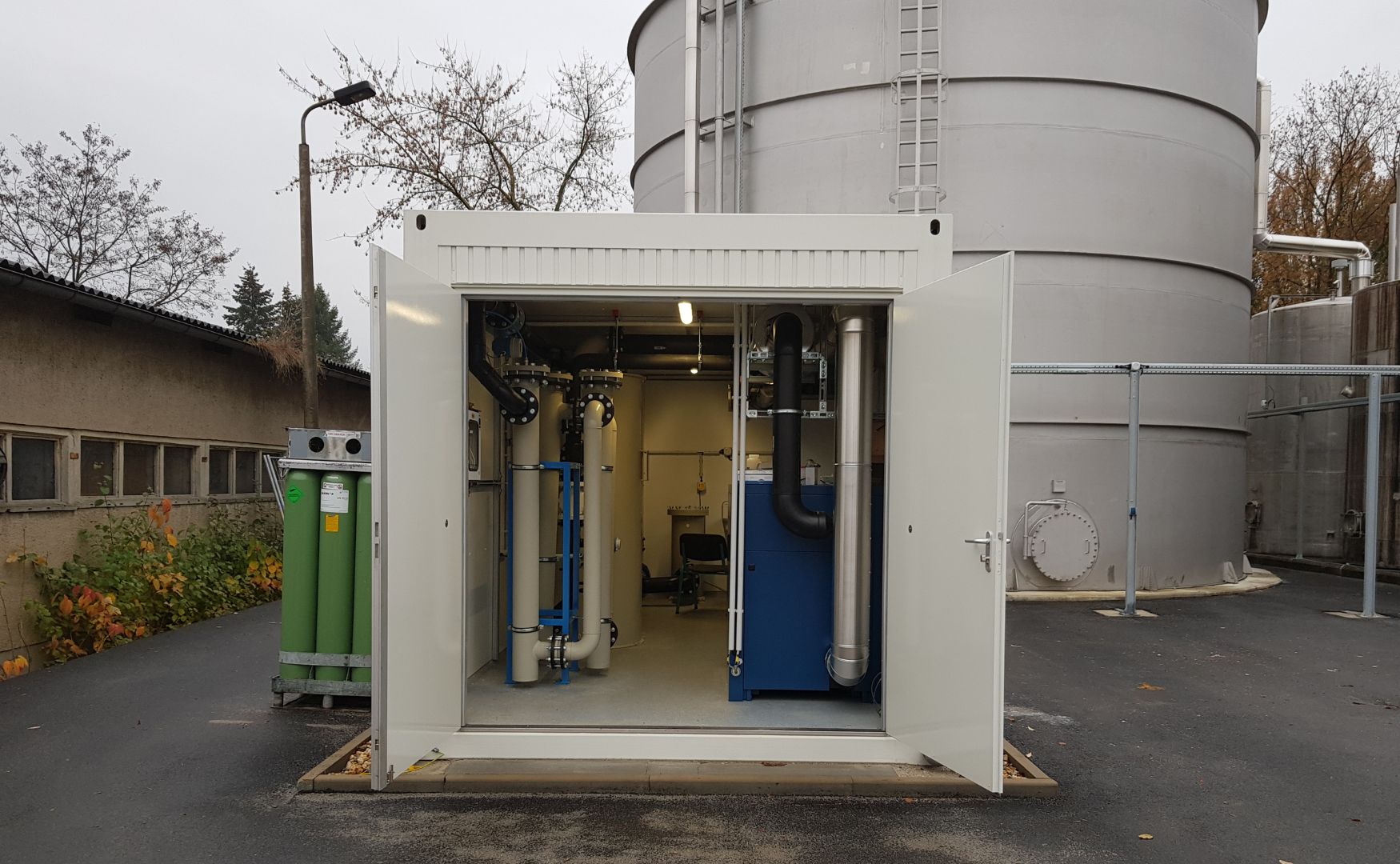
Photo: Example of a CO2 neutralization system in the ALMA module for a dairy(ALMA Neutra)
Measurement and control of the pH value
Measurement methods:
- pH electrodes: Standard method, based on a glass membrane electrode that generates an electrical voltage depending on the pH value.
- Online pH measuring devices: Continuous monitoring in water and wastewater streams.
- Photometric measurements: Use of indicator solutions to determine the pH value, especially in laboratory analysis.
Regulation:
- Dosing pumps: For the precise addition of acids or alkalis.
- pH control loops: Control systems that continuously monitor and automatically adjust the pH value.
- Static mixers: Promote the mixing of waste water and reagents to homogenize the pH value.
Calibration of the sensors:
- Regular calibration of the pH sensors with buffer solutions (e.g. pH 4, pH 7, pH 10) is required to ensure accurate measured values.
Challenges in pH value control
Buffer capacity:
- Water with a high alkalinity (e.g. carbonate buffer) requires larger quantities of acids or alkalis to adjust the pH.
- Solution: Optimization of the dosing strategies taking into account the water chemistry.
Dynamic loads:
- Strong fluctuations in the wastewater inflow can make pH control more difficult.
- Solution: Use of buffer tanks or intelligent control systems.
Material compatibility:
- At extreme pH values, there is a risk of material damage (e.g. to sensors or pipes).
- Solution: Use corrosion-resistant materials such as PTFE or stainless steel.
Conclusion
The pH value is a key parameter in industrial water and wastewater treatment. It influences almost all chemical, physical and biological processes in a plant. Precise measurement, regulation and control of the pH value is essential to ensure process stability, efficiency and compliance with legal requirements. Engineers and operators must master both the chemical principles and the practical challenges of pH control to ensure optimal plant design and operation.
For further information on our products, please feel free to contact us at any time!
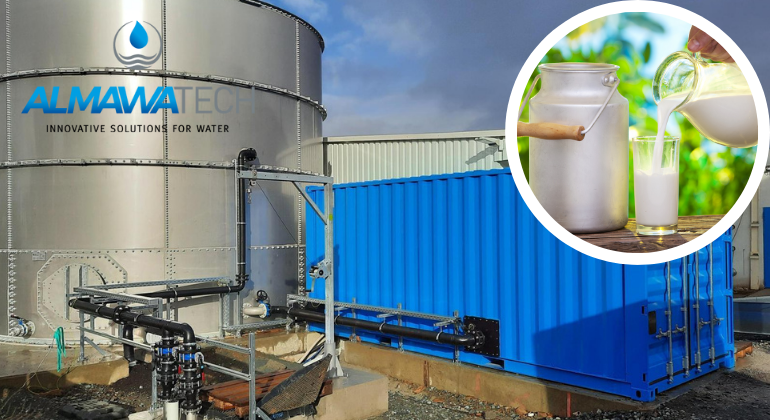
Photo: Example of a neutralization system in ALMA modular design with mixing and equalizing tank(ALMA Neutra)


